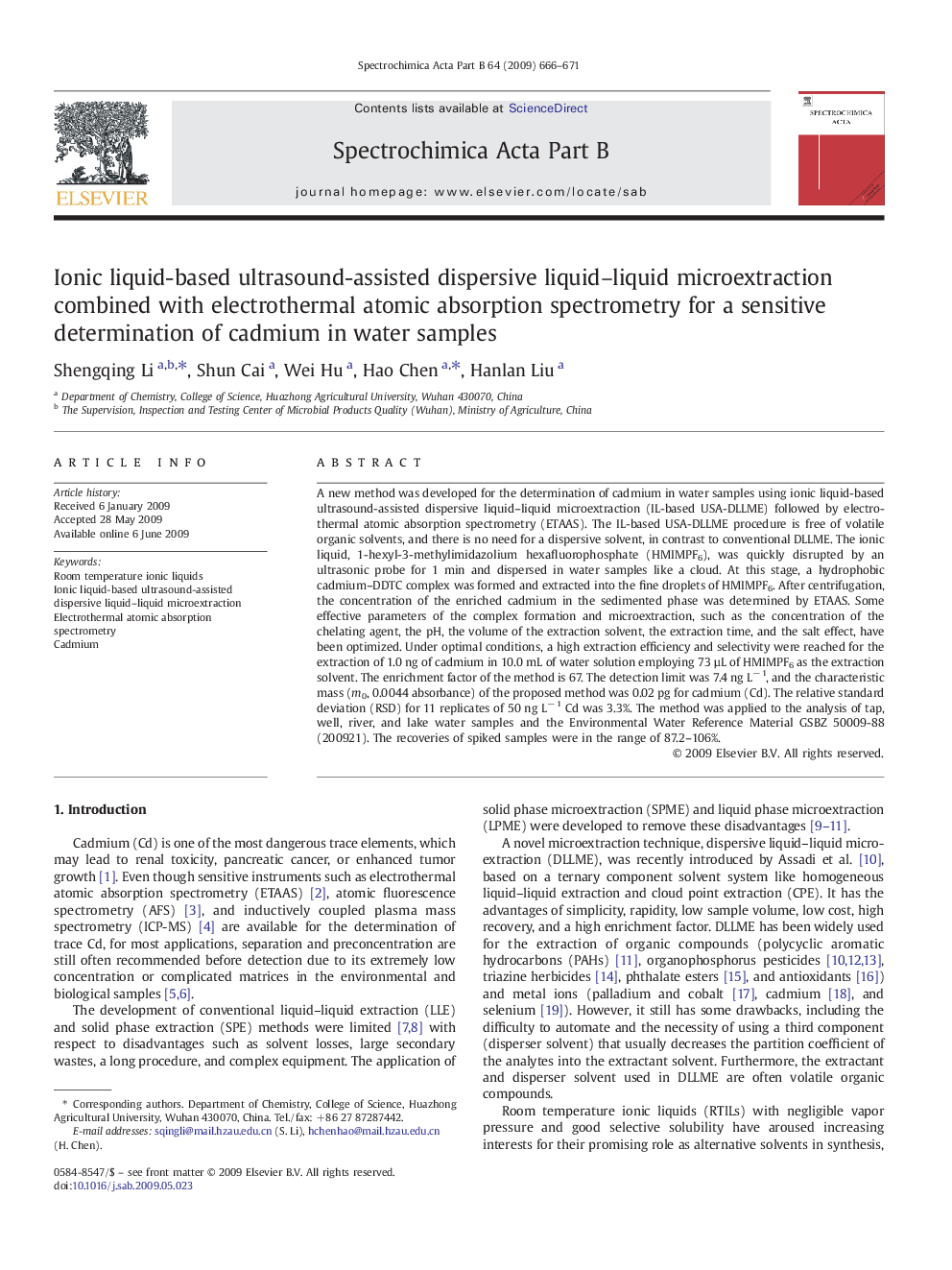| کد مقاله | کد نشریه | سال انتشار | مقاله انگلیسی | نسخه تمام متن |
|---|---|---|---|---|
| 1240943 | 969152 | 2009 | 6 صفحه PDF | دانلود رایگان |

A new method was developed for the determination of cadmium in water samples using ionic liquid-based ultrasound-assisted dispersive liquid–liquid microextraction (IL-based USA-DLLME) followed by electrothermal atomic absorption spectrometry (ETAAS). The IL-based USA-DLLME procedure is free of volatile organic solvents, and there is no need for a dispersive solvent, in contrast to conventional DLLME. The ionic liquid, 1-hexyl-3-methylimidazolium hexafluorophosphate (HMIMPF6), was quickly disrupted by an ultrasonic probe for 1 min and dispersed in water samples like a cloud. At this stage, a hydrophobic cadmium–DDTC complex was formed and extracted into the fine droplets of HMIMPF6. After centrifugation, the concentration of the enriched cadmium in the sedimented phase was determined by ETAAS. Some effective parameters of the complex formation and microextraction, such as the concentration of the chelating agent, the pH, the volume of the extraction solvent, the extraction time, and the salt effect, have been optimized. Under optimal conditions, a high extraction efficiency and selectivity were reached for the extraction of 1.0 ng of cadmium in 10.0 mL of water solution employing 73 µL of HMIMPF6 as the extraction solvent. The enrichment factor of the method is 67. The detection limit was 7.4 ng L− 1, and the characteristic mass (m0, 0.0044 absorbance) of the proposed method was 0.02 pg for cadmium (Cd). The relative standard deviation (RSD) for 11 replicates of 50 ng L− 1 Cd was 3.3%. The method was applied to the analysis of tap, well, river, and lake water samples and the Environmental Water Reference Material GSBZ 50009-88 (200921). The recoveries of spiked samples were in the range of 87.2–106%.
Journal: Spectrochimica Acta Part B: Atomic Spectroscopy - Volume 64, Issue 7, July 2009, Pages 666–671